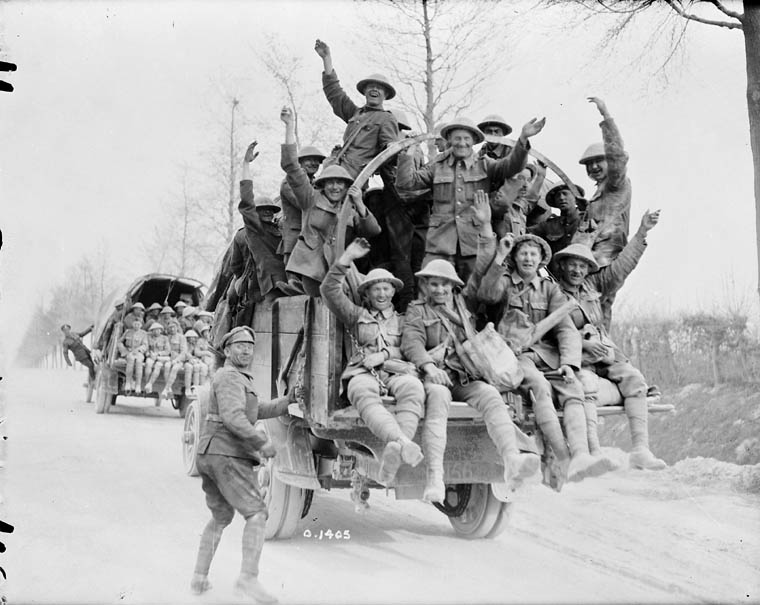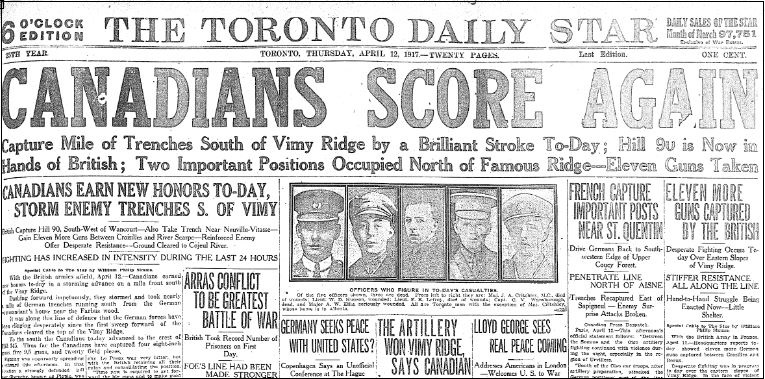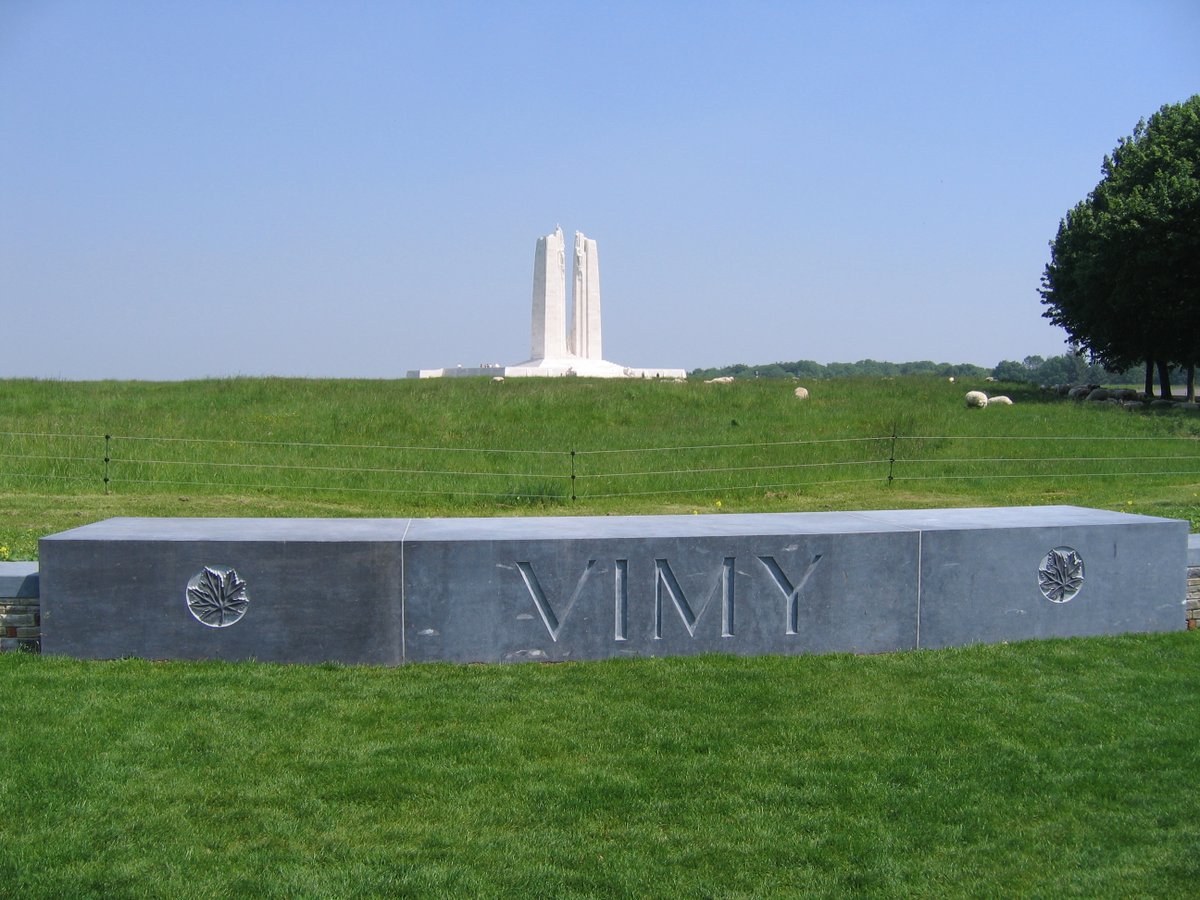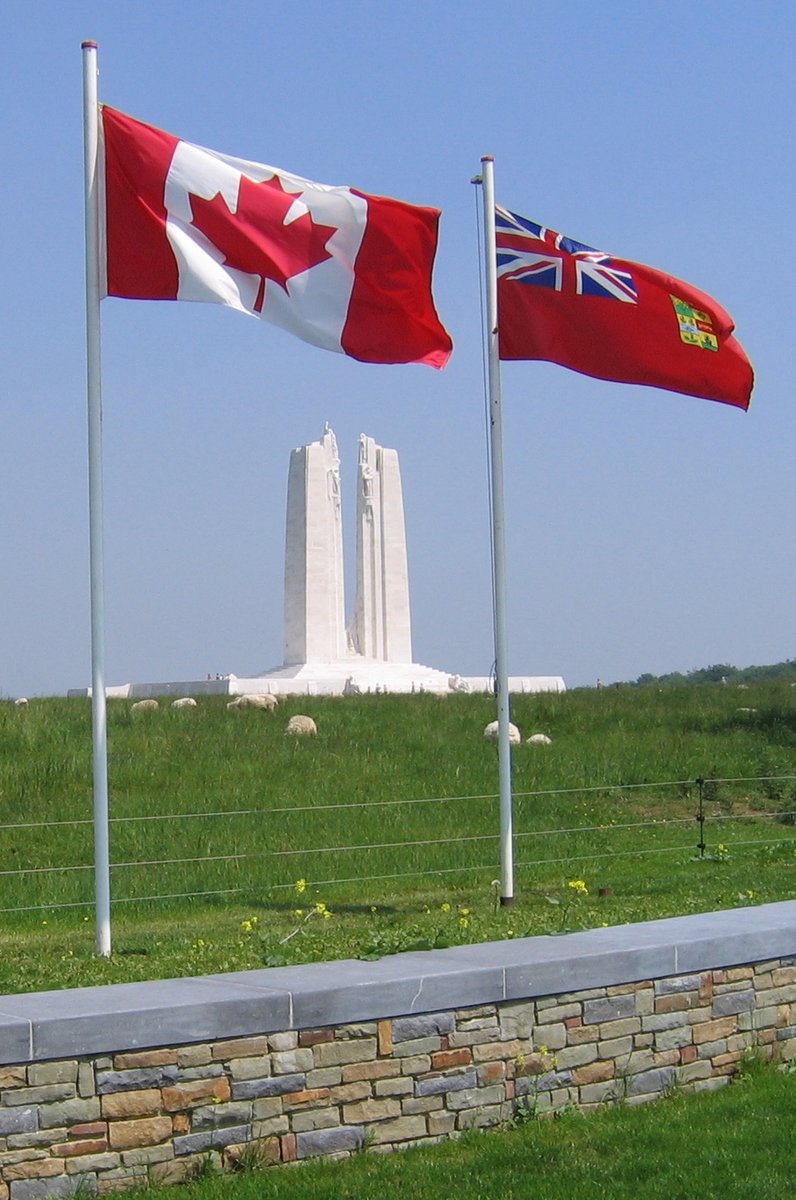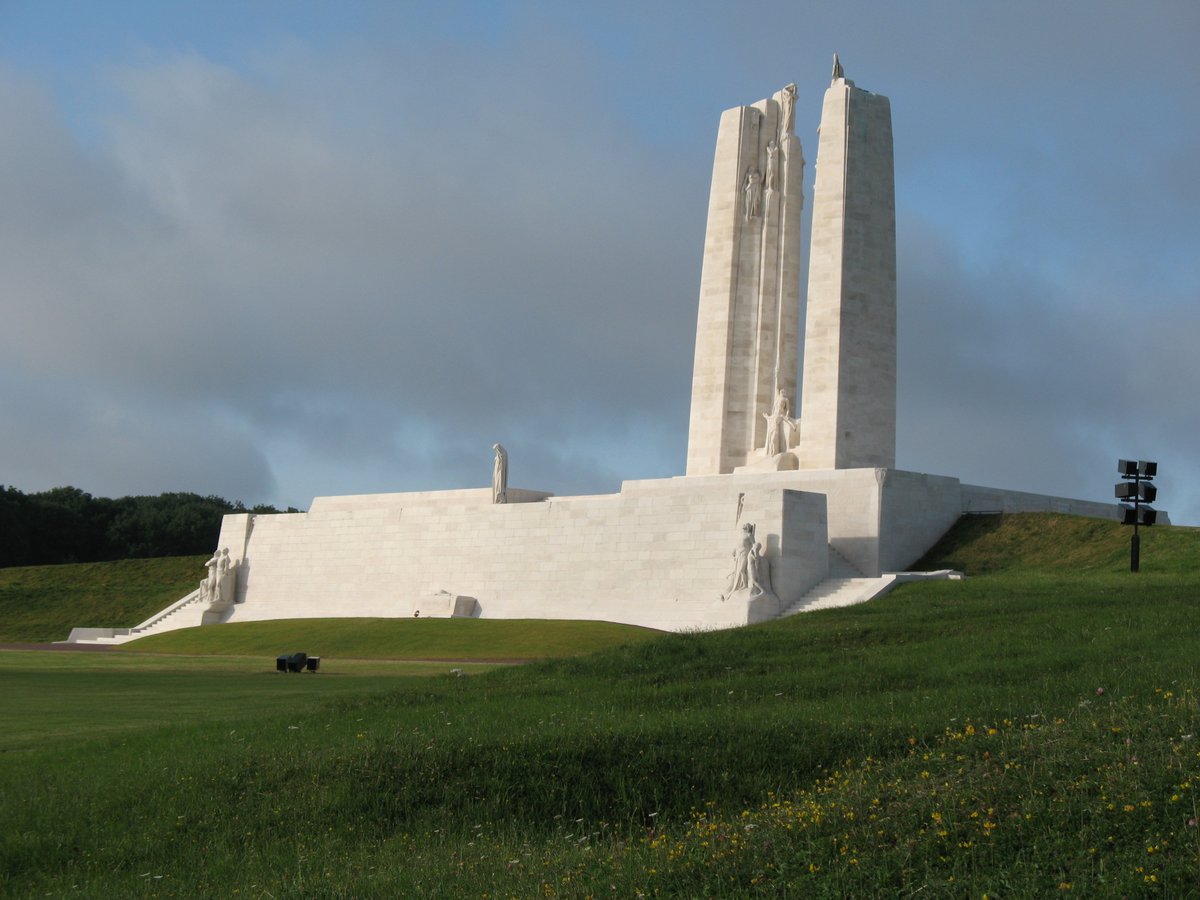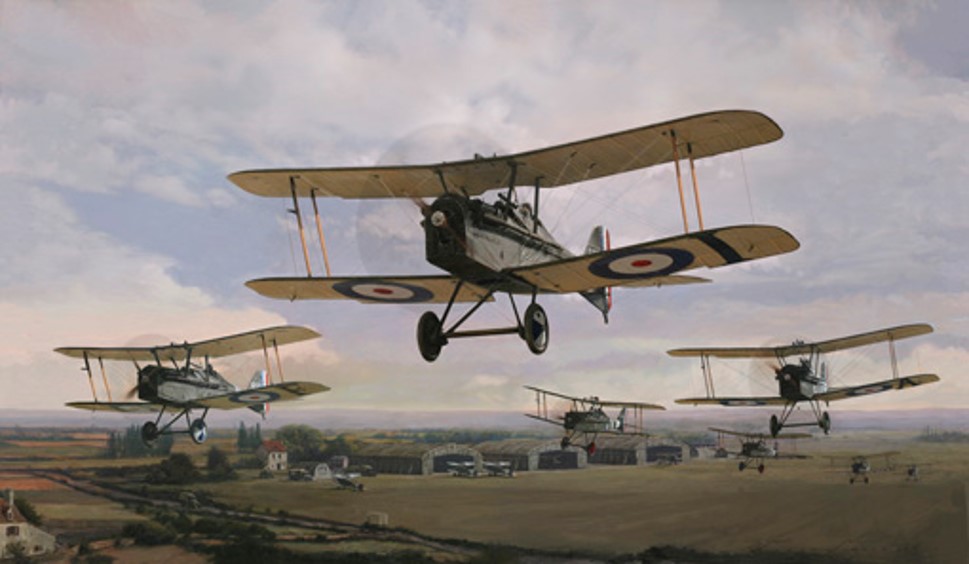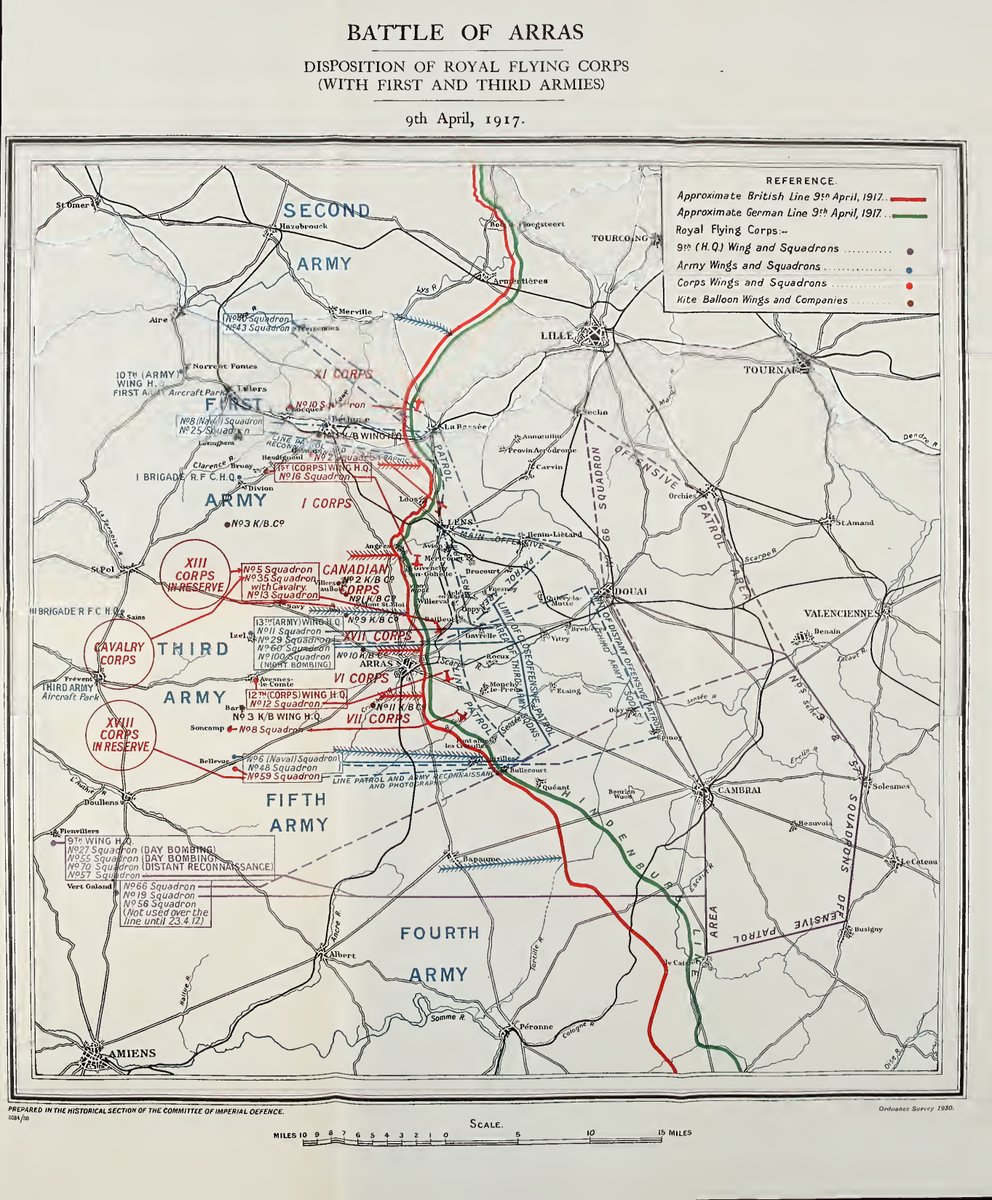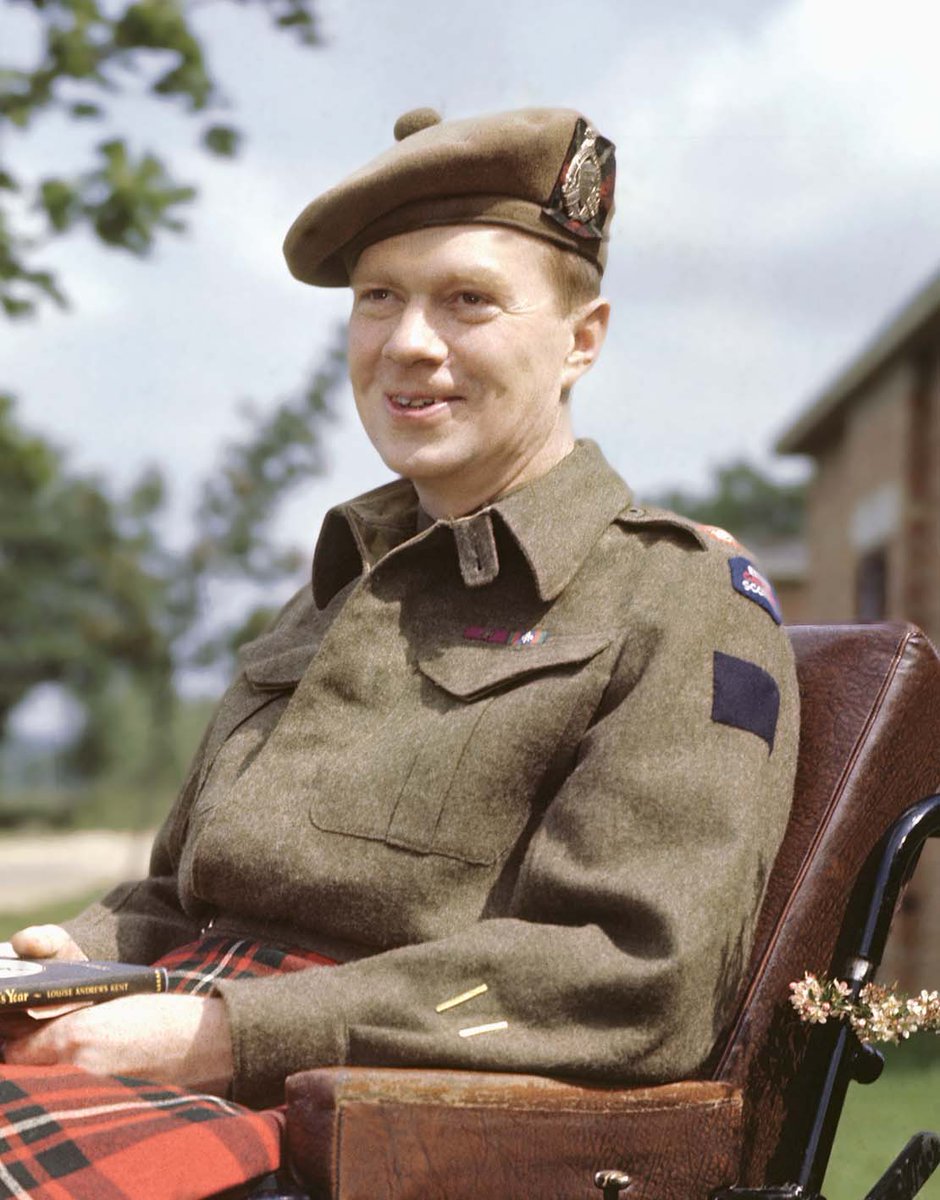
#OTD in 1918, the famous "Two against Twenty" fight. In one of the most remarkable aerial mêlées of the Great War, two Bristol Fighters took on 20 German scouts and survived unscathed while bringing down eight enemy aircraft.
Here's the story:
1/22
[James Field painting]
Here's the story:
1/22
[James Field painting]
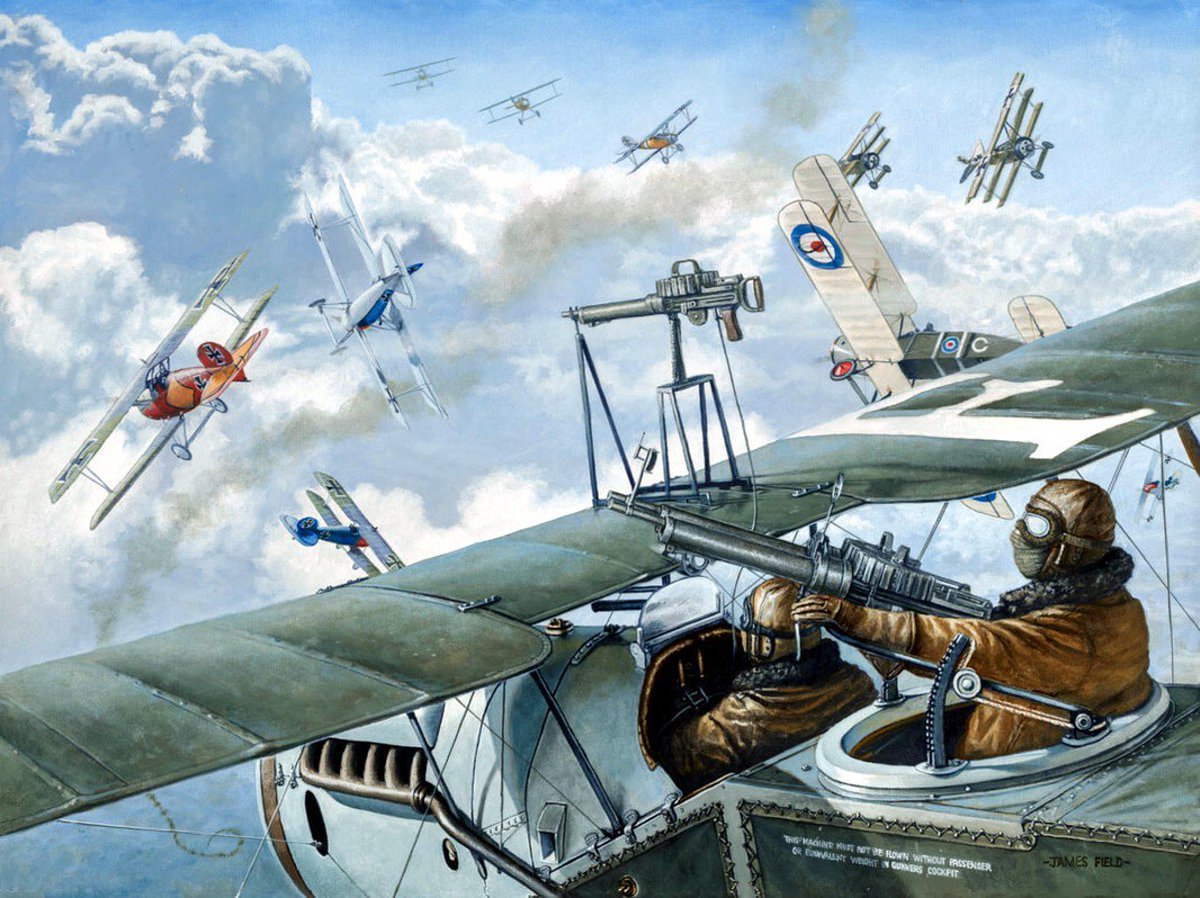
On the evening of 7 May 1918, two Brisfits from No 22 Squadron set out on an observation patrol north of Arras. One aircraft was flown by 2Lts Alfred Atkey (from Toronto) and observer Charles Gass. The other craft was crewed by 2Lts John Gurdon and John Thornton. 2/22
IWM photo
IWM photo
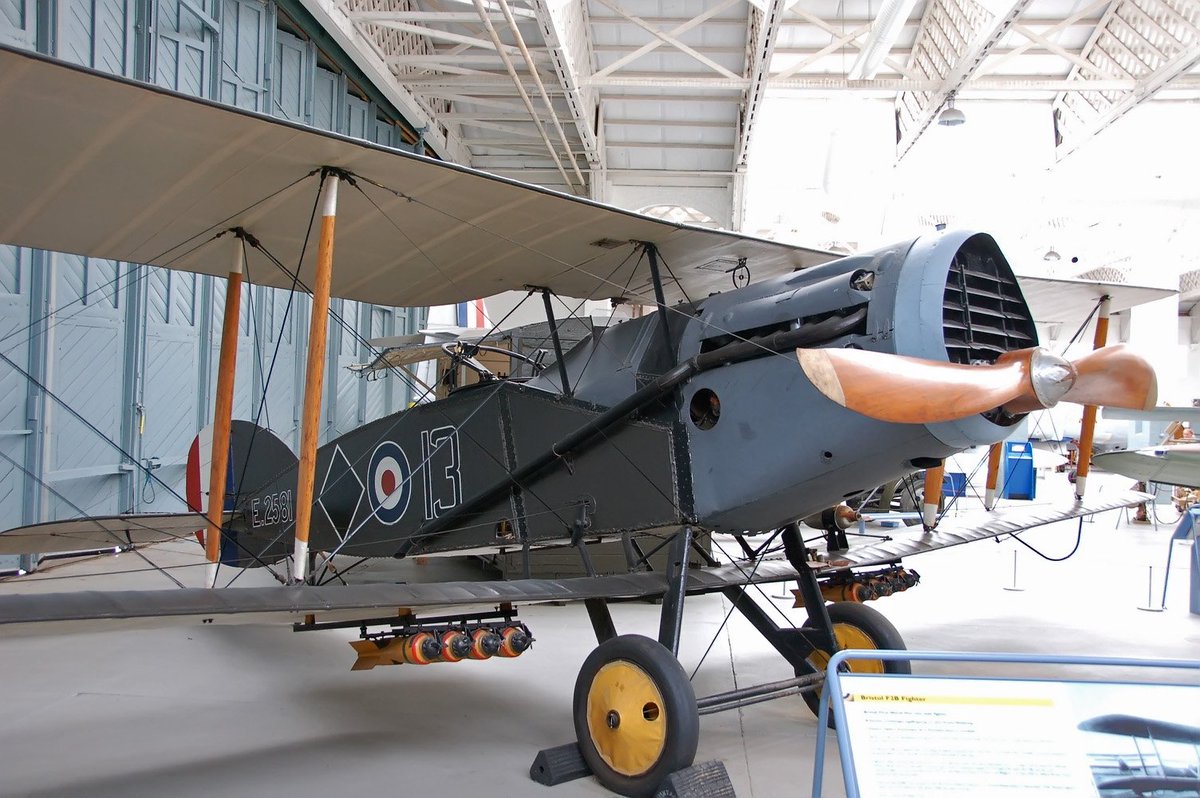
Their aircraft, the Bristol F.2b, was a two-seat fighter that has been described as "arguably the greatest combat machine of the air war." It had a poor debut in mid-1917 but when pilots learned to fly it like a fighter, not a two seater, it came into its own. 3/22 

At 645 pm they encountered a group of enemy scouts, likely Fokker D. VIIs. In the initial encounter, Atkey and Gurdon dived into the fight and each downed one aircraft while Thornton claimed a third and they climbed out of their attack. 4/22 

More German aircraft joined the battle and the 4 men found themselves in a running battle against a superior force. In spite of the odds, the Brisfits continued to take a heavy toll on the enemy. The fight only ended when the gunners ran out of ammo.
The Sphere, 29 Jun 1918
5/22
The Sphere, 29 Jun 1918
5/22
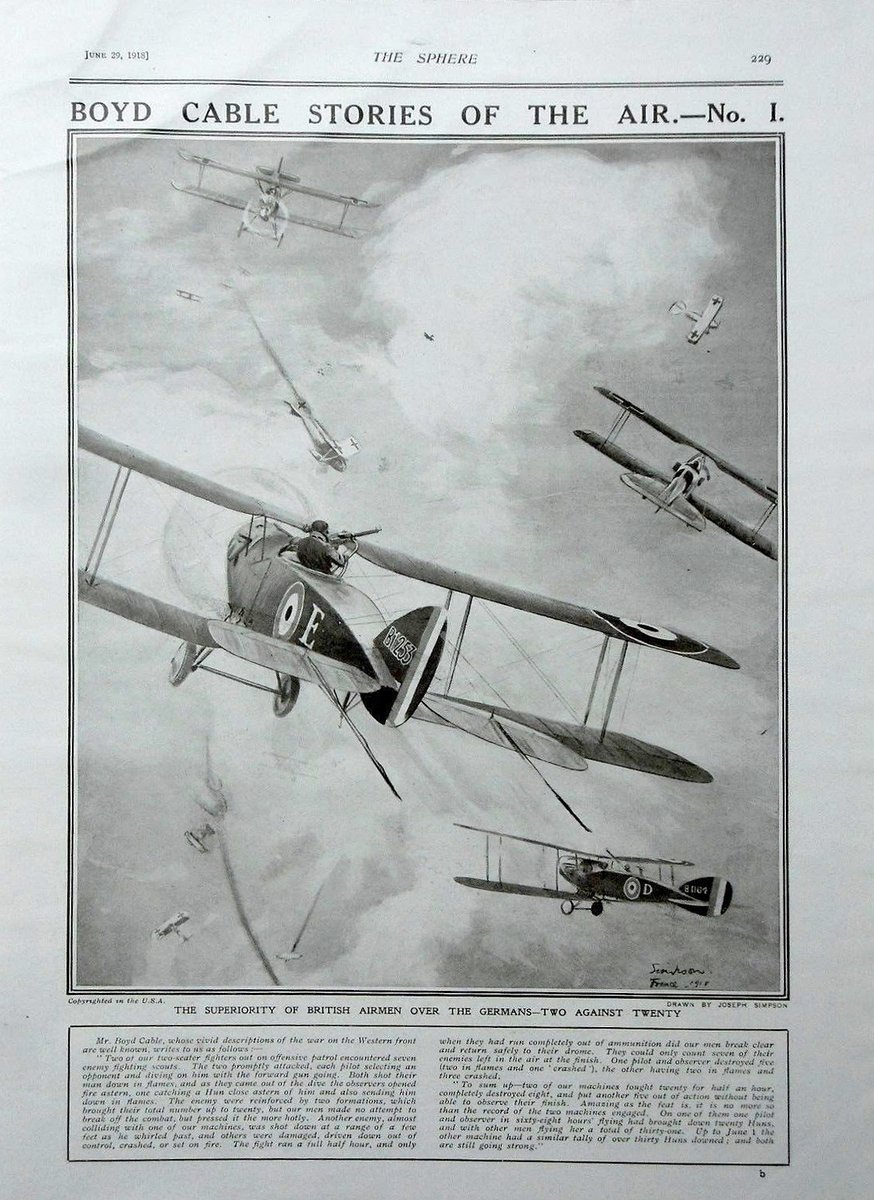
When they returned to base Atkey and Gass claimed 3 aircraft while Gurdon and Thornton claimed 1. After further investigation, the RAF revised this to give the former 2 in flames and 3 crashed, and the latter 2 in flames and 1 crashed. 6/22
Wingnut Wings photo.
Wingnut Wings photo.

German sources are largely silent on this encounter. German weekly and daily accounts make no mention of this fight. One source states, "it may very well be possible that the German Air Service covered up the incident since it was a poor debut for their newest fighter." 7/22
Gurdon was awarded the Distinguished Flying Cross on 2 Aug 1918:
"This officer is a brilliant fighting pilot who on all occasions shows great determination with entire disregard of personal danger. He has personally destroyed nine enemy machines.... 8/22
"This officer is a brilliant fighting pilot who on all occasions shows great determination with entire disregard of personal danger. He has personally destroyed nine enemy machines.... 8/22
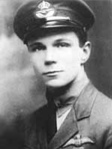
...On a recent date when on offensive patrol with another Bristol fighter he attacked a formation of seven enemy machines; one of these he shot down in flames. The enemy were then reinforced by two other formations, which brought their number up to twenty.... 9/22 
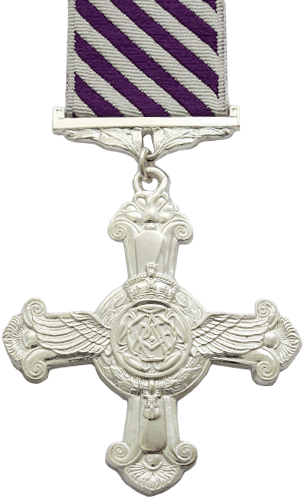
...Fighting continued for about half an hour when the Bristols broke off the engagement, their ammunition being exhausted. Only seven enemy machines remained, many having been seen to spin away, and one was shot down by this officer." 10/22
Atkey and Gass were each award the Military Cross. Atkey's citation stated:
"For conspicuous gallantry and devotion to duty. When engaged on reconnaissance and bombing work he attacked four scouts, one of which he shot down in flames. Shortly afterwards he attacked... 11/22

"For conspicuous gallantry and devotion to duty. When engaged on reconnaissance and bombing work he attacked four scouts, one of which he shot down in flames. Shortly afterwards he attacked... 11/22
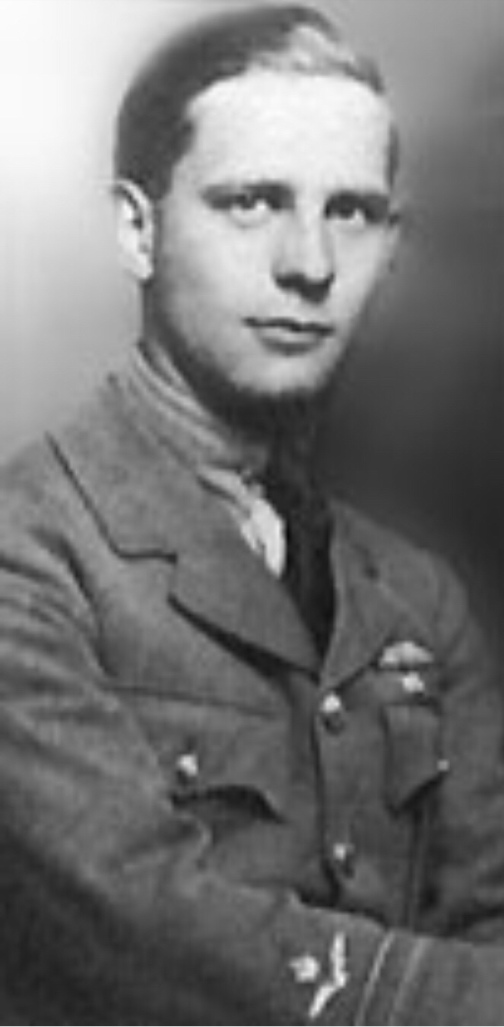
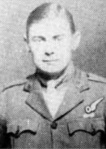
...4 two-seater planes, one of which he brought down out of control. On two previous occasions his formation was attacked by superior numbers of the enemy, three of whom in all were shot down out of control. He has shown exceptional ability and initiative on all occasions." 12/22 
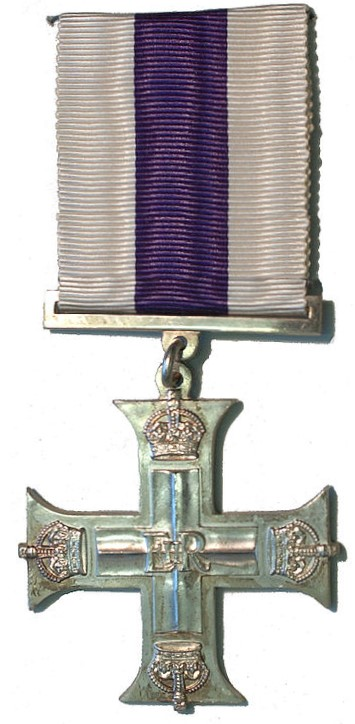
The awarding of gallantry decorations is an interesting issue. Alan McLeod & Arthur Hammond engaged in a similar against-all-odds fight 2 month earlier. McLeod was awarded the Victoria Cross & Hammond the MC. Here's my earlier thread:
13/22
https://twitter.com/mike_bechthold/status/1375864954436345858?s=20
13/22
Atkey & Gass were one of the outstanding Brisfit teams of the war. Two days after this fight, they claimed another 5 aircraft. Later, half their top wing was shot away and Gass climbed onto the wing to balance the aircraft so they could fly home.
Hugh Polder painting.
14/22
Hugh Polder painting.
14/22

Atkey and Gass each claimed 38 kills during the war, 29 of those while flying together between 7 May and 2 June 1918. Both left the air force at the end of the war, but would serve again in the Second World War. 15/22
Gurdon would claim 28 victories during the war, half destroyed and half driven down out of control. He was shot through the arm on 14 July and later in Aug badly concussed by AA shell near miss which ended his flying career. He subsequently became a journalist and author. 16/22 

John Thornton only flew with Gurdon for a week while sharing 6 victories and it is believed these were his only claims during the war. Nothing is known of his subsequent life. 17/22
Here is a period account of the battle printed in the 29 June 1918 issue of The Sphere:
"Two of our two-seater fighters out on offensive patrol encountered seven enemy fighter scouts. The two promptly attacked, each pilot selecting an opponent and diving on him with the... 18/22
"Two of our two-seater fighters out on offensive patrol encountered seven enemy fighter scouts. The two promptly attacked, each pilot selecting an opponent and diving on him with the... 18/22
...forward gun going. Both shot their man down in flames, and as they came out of the dive the observers opened fire astern, one catching a Hun close astern of him and also sending him down in flames. The enemy were reinforced by two formations, which brought their total... 19/22
...number up to twenty, but our men made no attempt to break off the combat, but pressed it the more hotly. Another enemy, almost colliding with one of our machines, was shot down at a range of a few feet as he whirled past, and other were damaged,... 20/22
...driven down out of control, crashed, or set on fire. The fight ran a full half hour, and only when they had run completely out of ammunition did our men break clear and return safely to their drome. They could only count seven... 21/22
...of their enemies left in the air at the finish. One pilot and observer destroyed five (two in flames and one 'crashed'), and the other having two in flames and three crashed."
FIN 22/22
FIN 22/22
• • •
Missing some Tweet in this thread? You can try to
force a refresh


